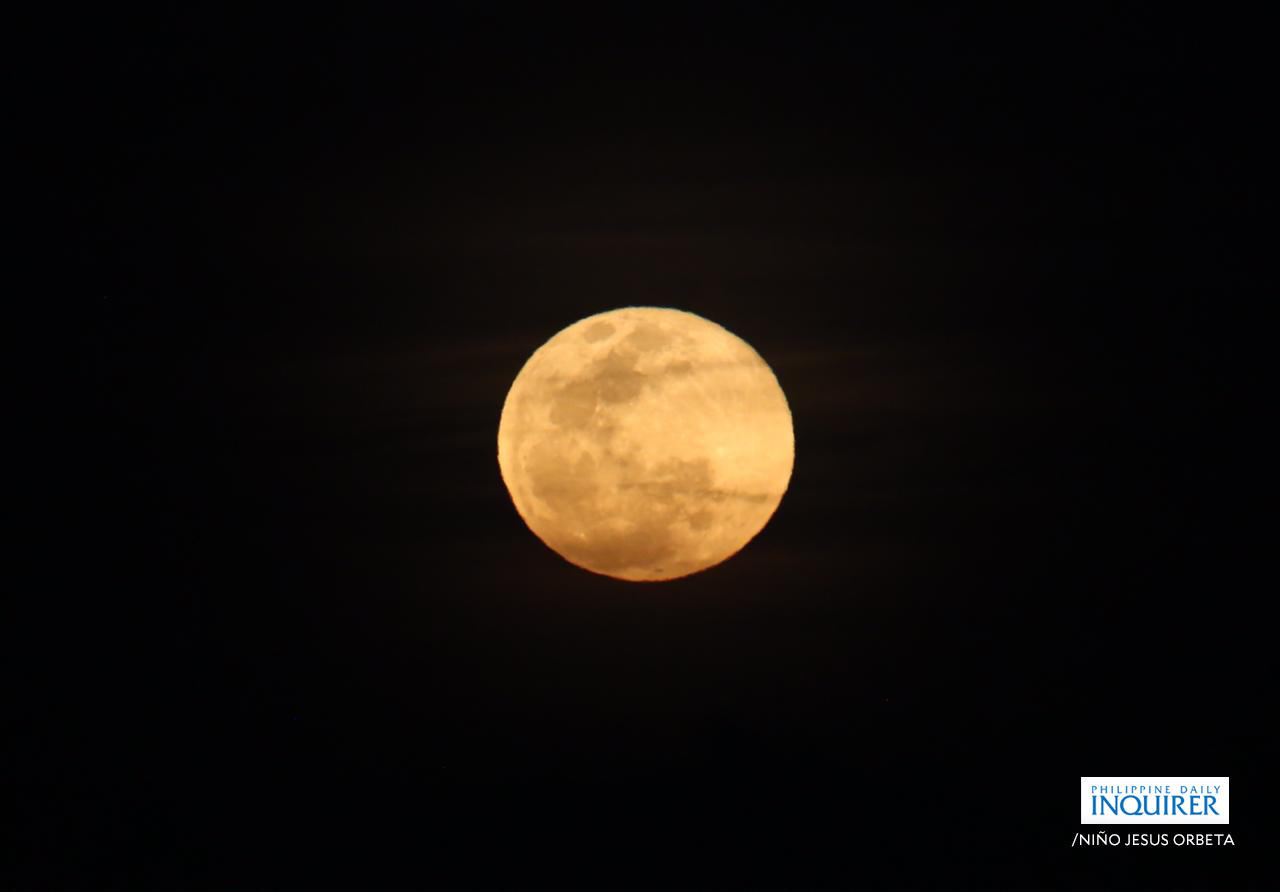Missed the supermoon? Other stellar events to enliven the night sky starting July 16
MANILA, Philippines — A “supermoon” (a full moon at its closest distance to Earth) lit up the midnight skies on Thursday, but Saturn, Jupiter, and Mars may also get close to the moon starting July 16, according to the Philippine Atmospheric, Geophysical and Astronomical Services Administration (Pagasa).
Pagasa said each planet would appear near the moon on three different days — July 16, 19 and 21.
“The close approach of the waning gibbous moon and Saturn on July 16 will be best seen by looking south at around 2:00 a.m. where both will be at their highest point in the sky,” said Pagasa.
Meanwhile, on July 19, the waning gibbous moon and Jupiter will also be close and observed 30 degrees above the horizon at 1:00 a.m. by looking east.
Then on July 21, the waning crescent moon and Mars will be observable in the eastern sky at 1:00 a.m.
Article continues after this advertisement“All pairings will be visible through the naked eye and are worth seeing until sunrise,” said Pagasa.
Article continues after this advertisementMeteor showers
Meanwhile, the Piscis Austrinids meteor shower will also become active from July 15 to August 10, with peak activity occurring around July 29.
“This radiant, Piscis Austrinids, will rise above the southeastern horizon on July 28 around 9:00 p.m. and therefore will be best observed once it reaches its highest position in the sky at around 2:00 a.m. of July 29,” said Pagasa.
Pagasa added that the said meteor shower is expected to produce five meteors per hour under moonless dark skies.
These astronomical events come just days after the public observed a “supermoon” (or the full moon at its closest distance to Earth) on Thursday early morning around 2:00 a.m.
RELATED STORY:
Pagasa: Expect longer days and nights
